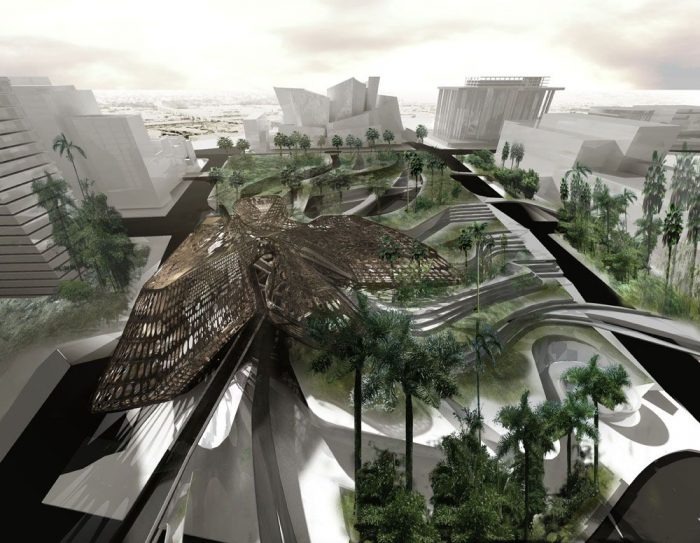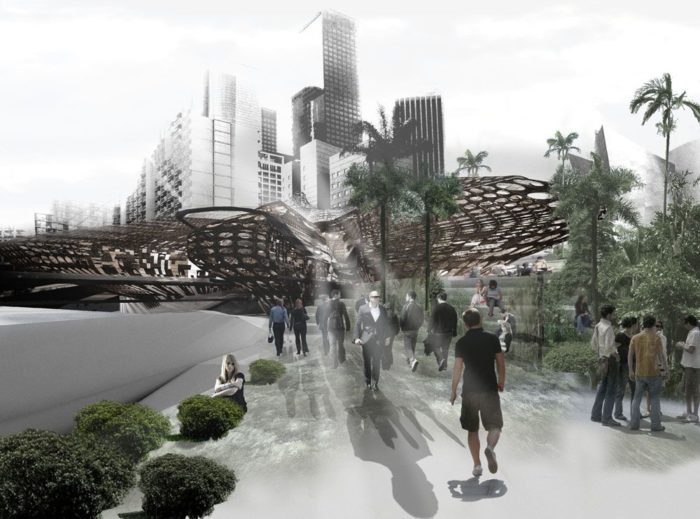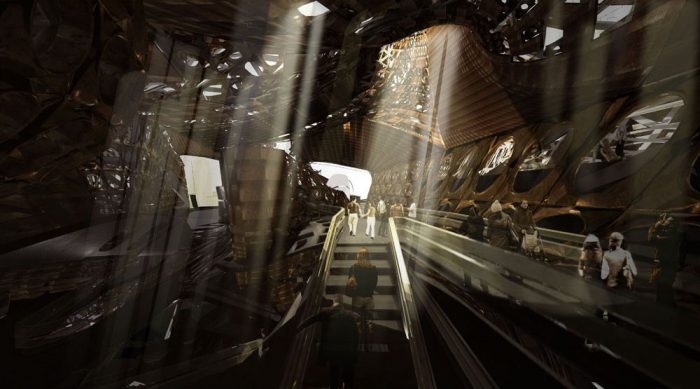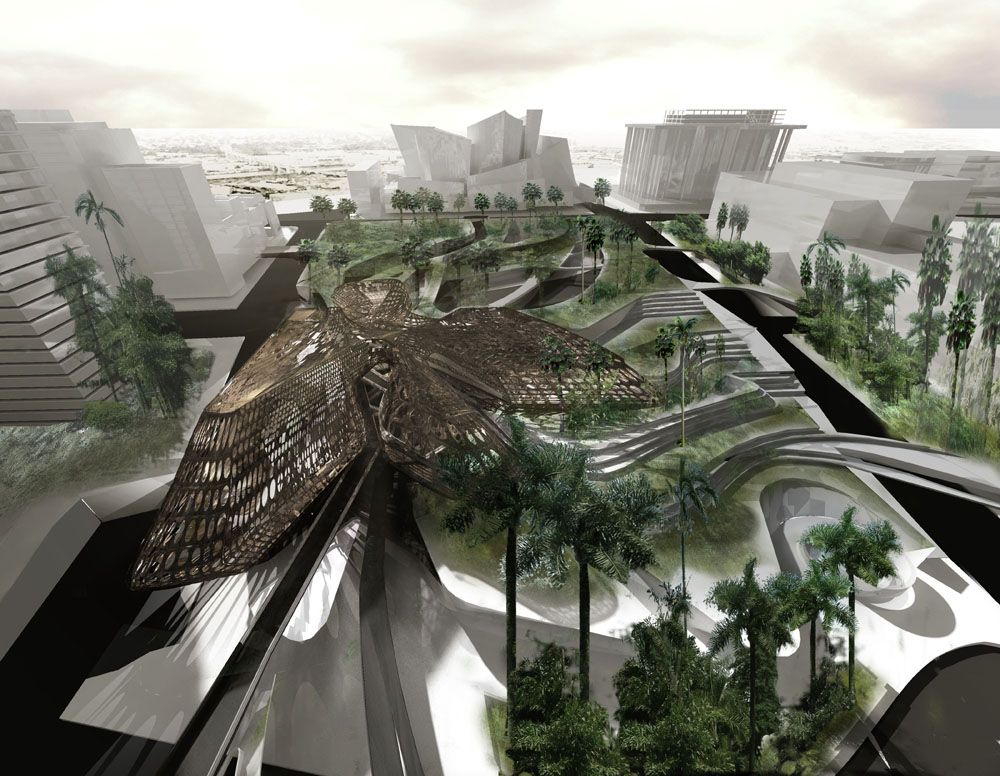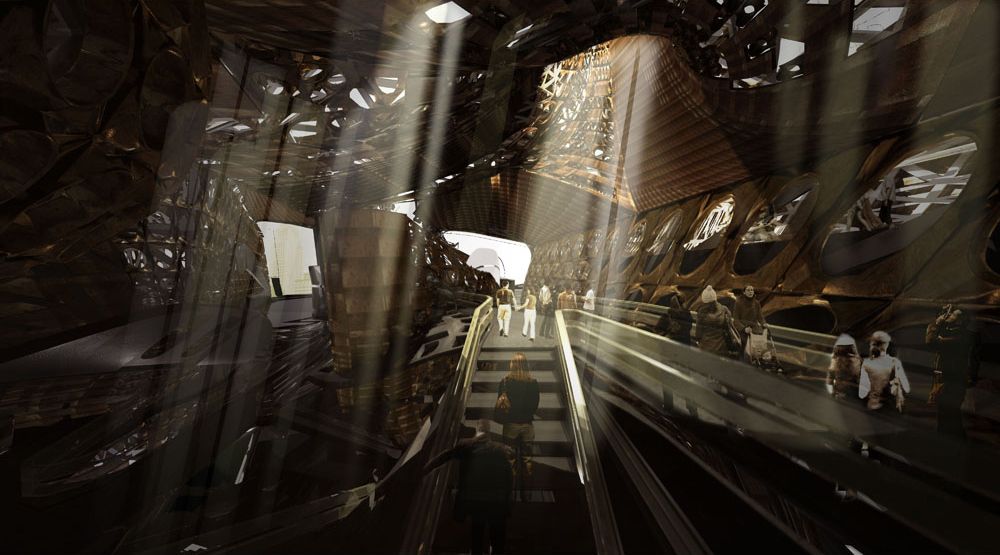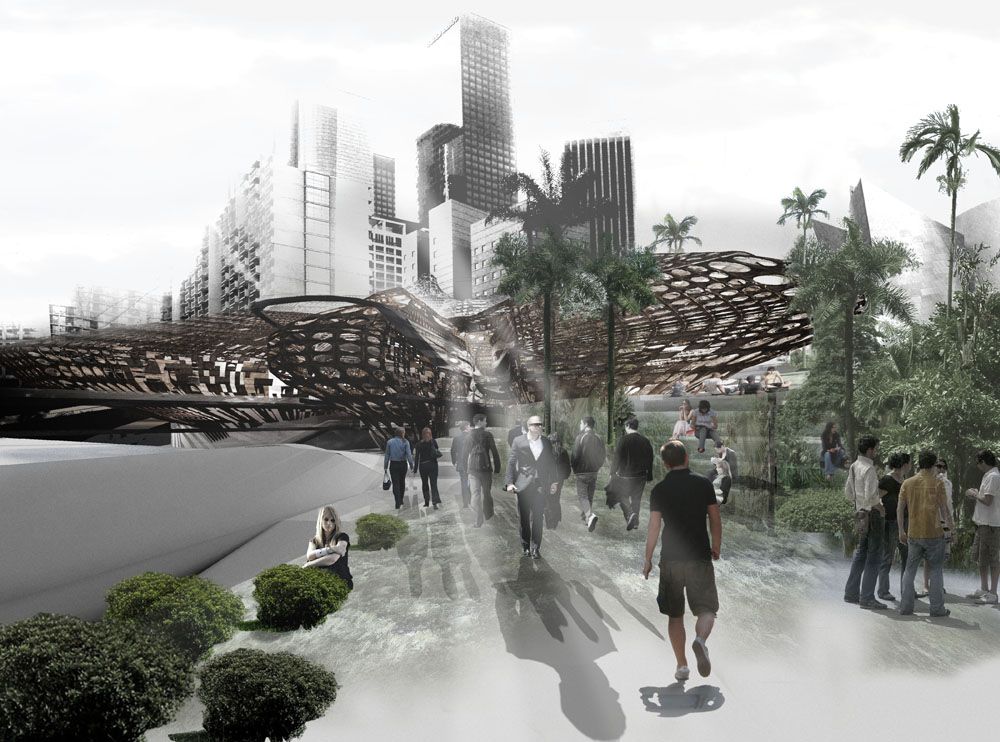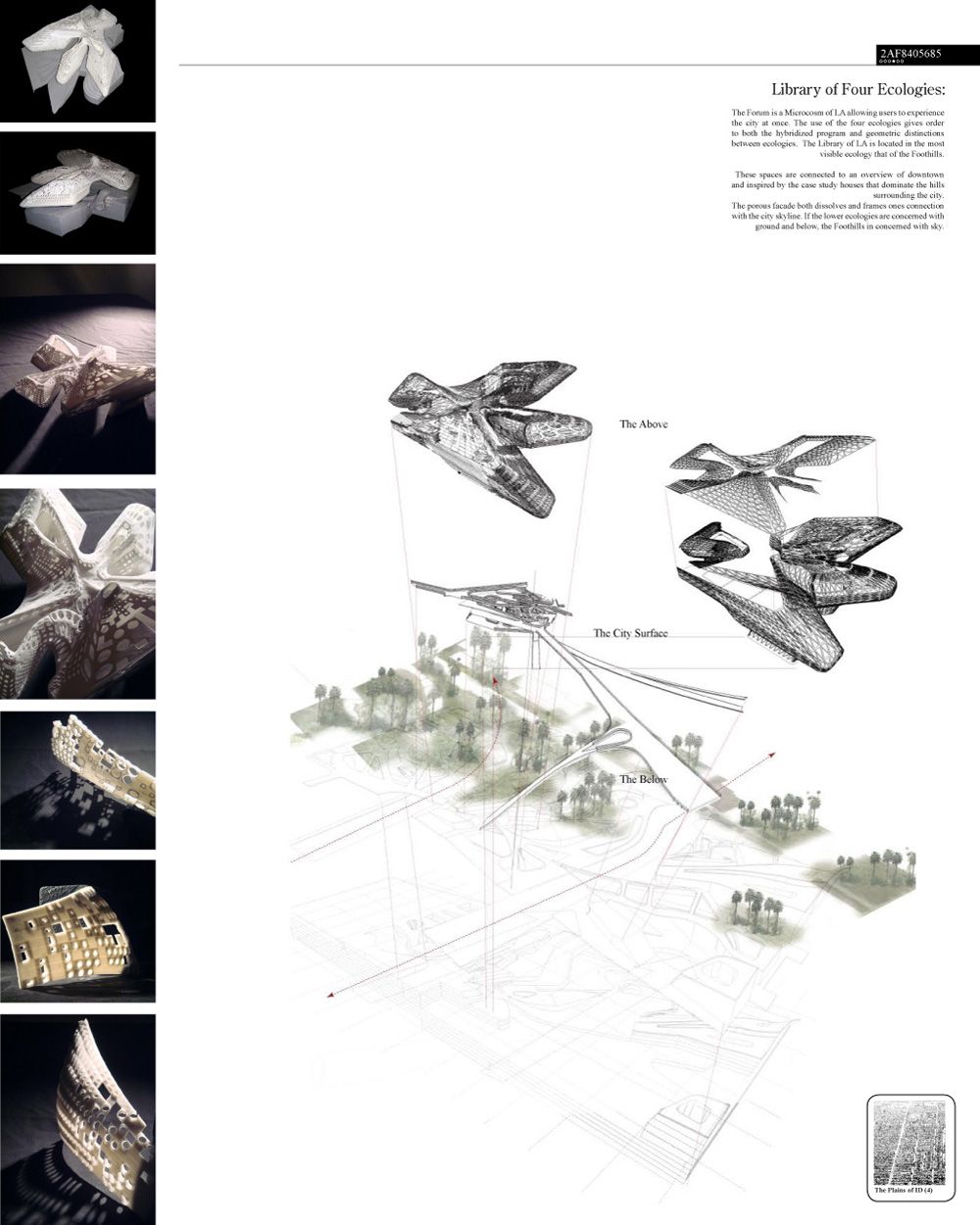Light and shadow are common contrasts that define the human state as we know it today, serving as the ties that bind our relative good and evil. Although instincts push us to want to be in the light, there is always that clawing desire and allure to the dark, but is it fair to say that one is better than the other? As with the principle nature of humanity, there are also those which find themselves comforted by the notion of both, rather than the difficulty of choosing one side. Architecture throughout time has captivated people torn with this paradox and others like it; those beset by a creative need to understand opposites, realizing that without one you cannot have the other, where through design they can begin to wrap their heads around these abstract conditions.
The LA Forum and Library of the Four Ecologies, a work by Dave Edwards remains opposed to the mundane conformity of standard architecture. The deeply motivated antithesis of a shape, cast upon by shadows and yet casting shadows itself, is not an unintentional product of his project, rather, it is the theme. Inspired by the path of heresy versus the virtuous, at first glance it appears as though the surrounding metropolis is drawn in as an asset to an even greater monumental structure, extending its claws deep into the urban backgrounds. But the structure itself aims to reflect the possibilities of the city, looking towards the future, while also maintaining a significant hold on the present to help visitors acquire a better sense of the city as it exists.

As stated by Dave Edwards himself, the notions inspired by Dantes’ Divine Comedy play a pivotal role in the glossary used to create such a scene as once again the study of contrasts is being drawn. Edwards came to the conclusion that “The distinction between the sacred and the profane is that of a boundary or threshold.” This statement holds weight much greater than seems originally apparent where his attempt to differentiate his own work from the surrounding contemporary buildings is defined only moreso by the grand colorings used and abstract interpretations of his design. Again inspired by the works of Dante, darks, lights and powerful golds are used to perceive the deepest appreciation for cultural aesthetics, acknowledging the existence of opposites not only in architecture, but in humanity as well.
Courtesy of Dave Edwards
Courtesy of Dave Edwards
Courtesy of Dave Edwards
Courtesy of Dave Edwards



